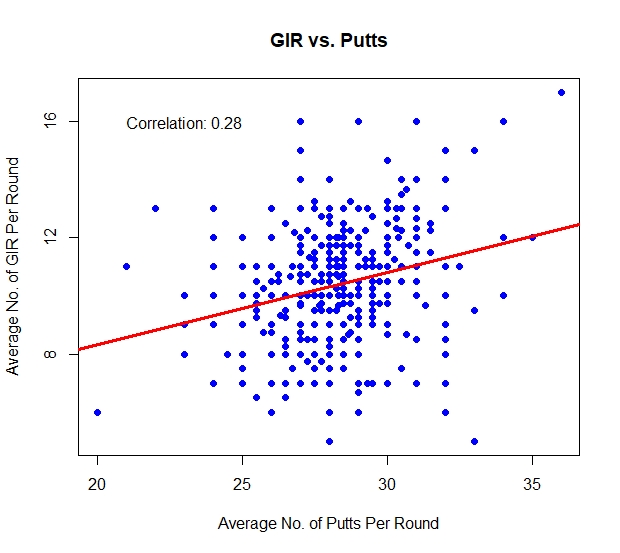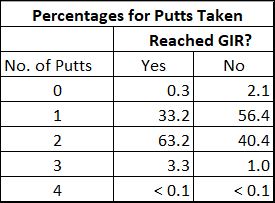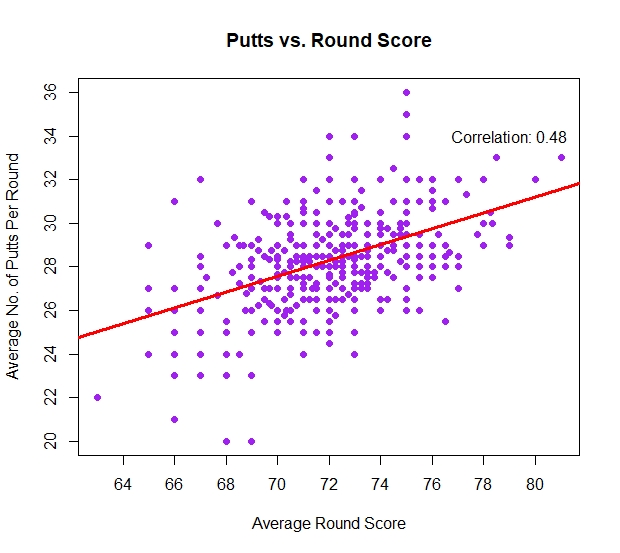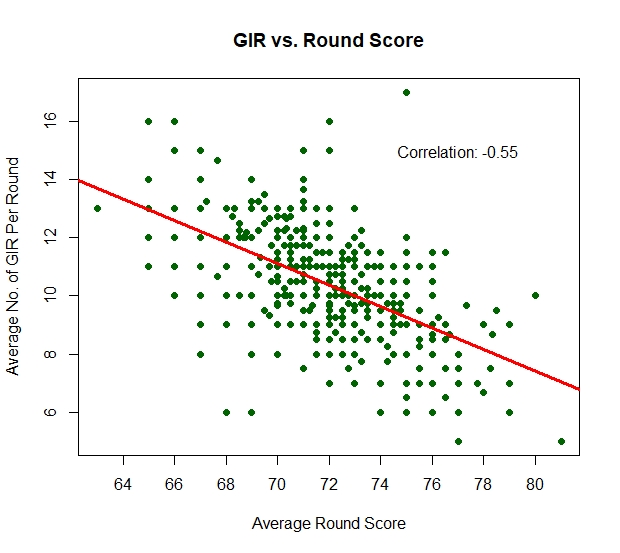While golfers strive to make as many greens in regulation (GIR) as possible, does it affect their putting performance? Just because a golfer hits a green in regulation, there is no guarantee the ball will be close to the pin.
There are three things I looked at:
- What’s the relationship between GIR’s and putting performance?
- What’s the relationship between putting and scoring?
- What’s the relationship between GIR’s and scoring?

Perhaps, a better way to look at this is in terms of the number of putts associated with getting a GIR and not getting a GIR. From the table below, we can see that almost twice as many two-putts (63.2%) occur with a GIR vs. one-putts (33.2%). Meanwhile, when a GIR doesn’t happen, one-putts (56.4%) are more frequent than two-putts (40.4%) at about a 7:5 ratio.

Putting and Scoring
We would expect more putts to be associated with higher scores and they are (r=0.48). While there is some scatter here, the image below reveals that it’s extremely rare to have an average round score over 73 with an average of 25 putts or less.

GIR’s and Scoring
OK, GIR’s are associated with more putts. But what about overall round scores? It turns out that round scores are negatively correlated with GIR’s (-0.55), despite the extra putts. Players who average 13 GIR’s per round are almost guaranteed to shoot 73 or better on average, as seen in the image below.

Collectively, these findings suggest you should worry more about making sure your shots end up on the green in regulation than attempting high-risk/high reward shots (i.e., reckless pin-seeking) that could miss the green altogether.